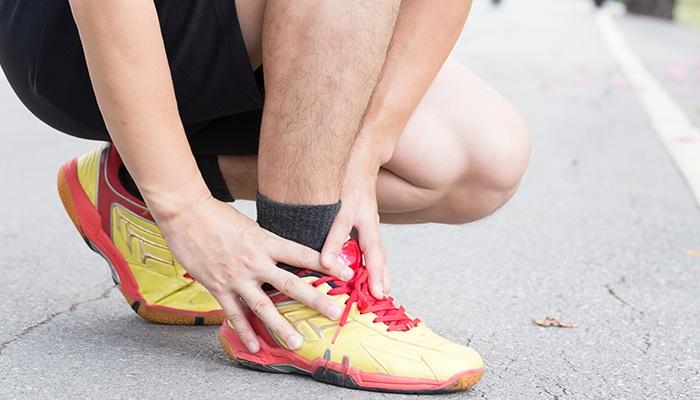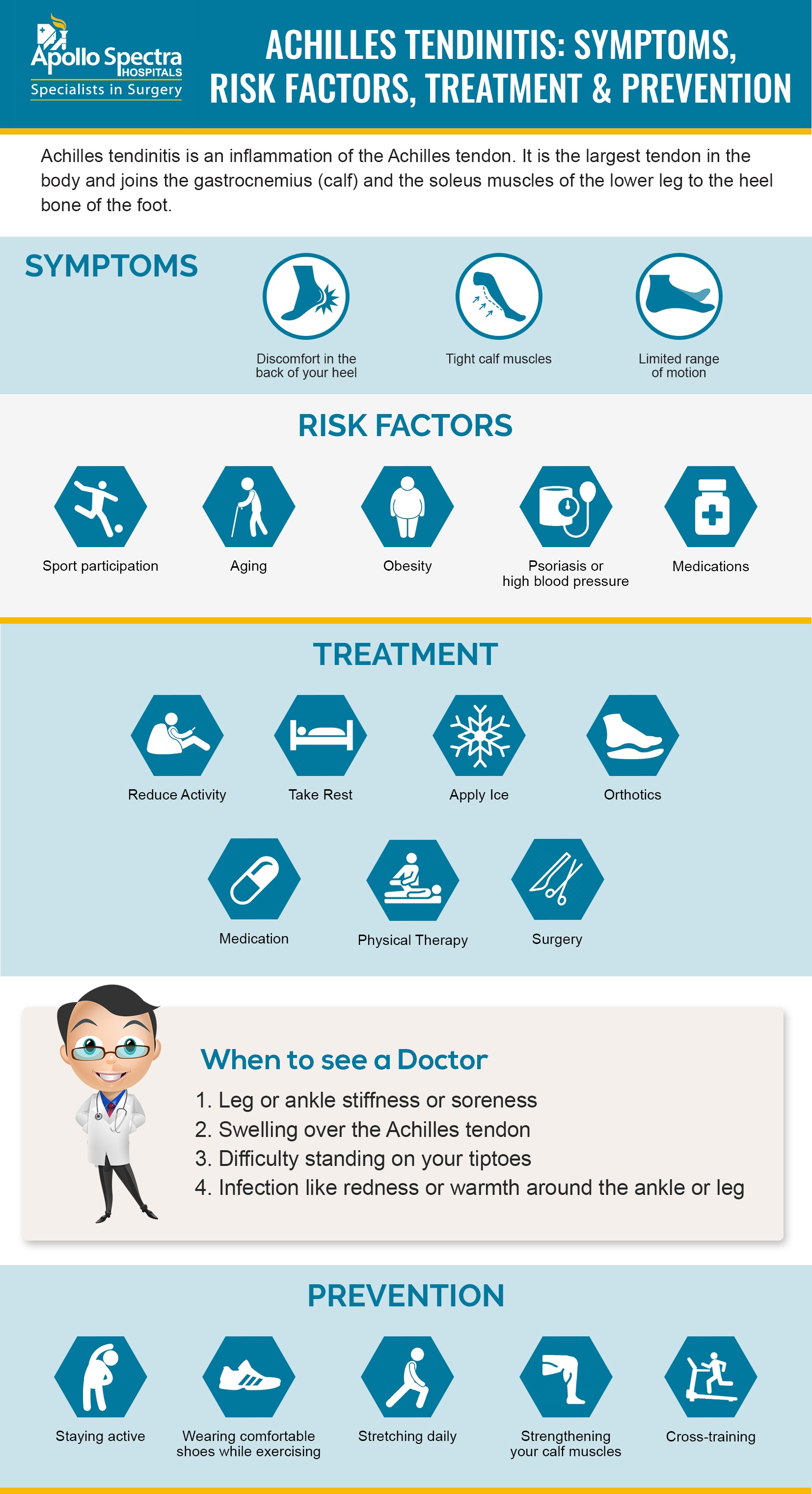Achilles tendinitis - symptoms and causes
March 30, 2020

The Achilles tendon is a band of tissue behind the lower leg connecting the heel bone with the calf muscles. Injury resulting from overuse of this tendon is known as Achilles tendinitis. This condition is most common among runners who have increased the duration or intensity of their runs all of a sudden. A lot of people, mostly in their middle age, who play sports like basketball or tennis also commonly, suffer from Achilles tendinitis.
In most cases, Achilles tendinitis can be cured with simple self-care at home under the supervision of a doctor. It is important to have a self-care plan to prevent episodes from recurring. When the condition is more serious, it can even result in rupture or tear of the Achilles tendon. If that happens, you may end up needing surgical repair.
Achilles Tendinitis Symptoms
The primary symptom of the condition is pain that builds up gradually and worsens over time. Since the Achilles tendon is located on the back of the lower leg, the pain is experienced in that particular area. If you have Achilles tendinitis, you may experience:
- Soreness of the Achilles tendon just above the place where the tendon meets the heel bone
- Stiffness, slowness or weakness of the lower leg
- Moderate pain starting in the back of the leg after exercising or running and thereafter becoming more severe.
- Achilles tendon starts to pain when running or a few hours after
- Increased pain while running for a long time or running fast or while climbing stairs
- Swelling of the Achilles tendon resulting in a visible bump
- Creaking of the Achilles tendon when moved or touched.
When should you see your doctor?
You should call your doctor if you experience pain around the Achilles tendon that continues to persist. If the pain is severe or it causes some sort of disability, it is vital that you get immediate medical attention. There is a chance of your Achilles tendon being ruptured.
Diagnosis
Since the symptoms of Achilles tendinitis are common with other similar conditions, you will need professional medical help to make an accurate diagnosis. The doctor will start by enquiring about your symptoms and then perform a physical exam. During this exam, they will try to pinpoint the source of inflammation or pain by touching the back of the tendon or ankle. Your doctor will also check your ankle and foot to see if the flexibility and range of motion have been compromised.
Complication
Achilles tendinosis is a condition that may result from Achilles tendinitis. This is a degenerative condition that causes the structure of the tendon to change and make it more susceptible to heavy damage. It can result in a tear of the tendon and cause excessive pain. Tendinosis and tendinitis are different conditions.
Tendinosis involves cellular degeneration and it doesn’t cause any inflammation while tendinitis majorly involves inflammation. It is possible to misdiagnose tendinitis as tendinosis. To get more appropriate treatment, getting the right diagnosis is very important.
Causes
There are different ways through which Achilles tendonitis may develop. While it is easier to avoid some as compared to others, still having awareness can help diagnose the condition earlier and this avoids the occurrence of serious injury.
- Insertional Achilles tendonitis affects the Achilles tendon’s lower portion where it connects to the heel bone. This condition isn’t necessarily related to activity
- Non-insertional Achilles tendinitis tends to be more common among younger and more active individuals. This causes the tendon fibers to start breaking down, swell and thicken.
Common causes of Achilles tendinitis are:
- Exercising or running while wearing worn-out or incorrect shoes
- Exercising without proper warm-up before
- Rapidly increased exercising intensity
- Introduction of stair climbing or hill running to an exercise routine on a premature basis.
- Running on uneven or hard surfaces
- Injury to or low flexibility of the calf muscles causing more stress on the Achilles tendon
- Intense and sudden physical activity.
- The difference in the anatomy of the foot, ankle or leg such as fallen arches or flat feet.
NOTICE BOARD
CONTACT US
CONTACT US
 Book Appointment
Book Appointment


.svg)
.svg)
.svg)
.svg)








